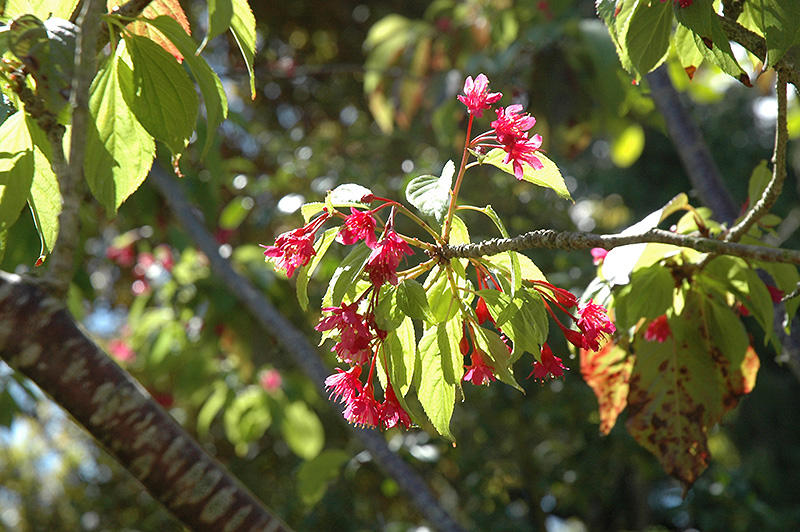Height: 25 feet
Spread: 25 feet
Sunlight:
![]()
![]()
Hardiness Zone: 7a
Other Names: Formosan Cherry
Description:
A small deciduous tree with dense branching and a graceful spreading habit; deep pink flowers emerge in clusters in early spring followed by small cherries that ripen to black; fast growing but seldom lives beyond 15 years; a very showy accent tree
Ornamental Features
Taiwan Cherry is bathed in stunning clusters of lightly-scented hot pink bell-shaped flowers along the branches in early spring before the leaves. The fruits are showy dark red drupes which fade to black over time, which are carried in abundance in early summer. It has dark green deciduous foliage which emerges coppery-bronze in spring. The pointy leaves turn an outstanding coppery-bronze in the fall. The smooth brick red bark adds an interesting dimension to the landscape.
Landscape Attributes
Taiwan Cherry is a dense deciduous tree with an upright spreading habit of growth. Its average texture blends into the landscape, but can be balanced by one or two finer or coarser trees or shrubs for an effective composition.
This tree will require occasional maintenance and upkeep, and is best pruned in late winter once the threat of extreme cold has passed. Gardeners should be aware of the following characteristic(s) that may warrant special consideration;
- Disease
Taiwan Cherry is recommended for the following landscape applications;
- Accent
- Shade
Planting & Growing
Taiwan Cherry will grow to be about 25 feet tall at maturity, with a spread of 25 feet. It has a low canopy with a typical clearance of 2 feet from the ground, and is suitable for planting under power lines. It grows at a medium rate, and under ideal conditions can be expected to live for approximately 15 years.
This tree does best in full sun to partial shade. It does best in average to evenly moist conditions, but will not tolerate standing water. It may require supplemental watering during periods of drought or extended heat. It is not particular as to soil pH, but grows best in rich soils. It is highly tolerant of urban pollution and will even thrive in inner city environments, and will benefit from being planted in a relatively sheltered location. This species is not originally from North America.

